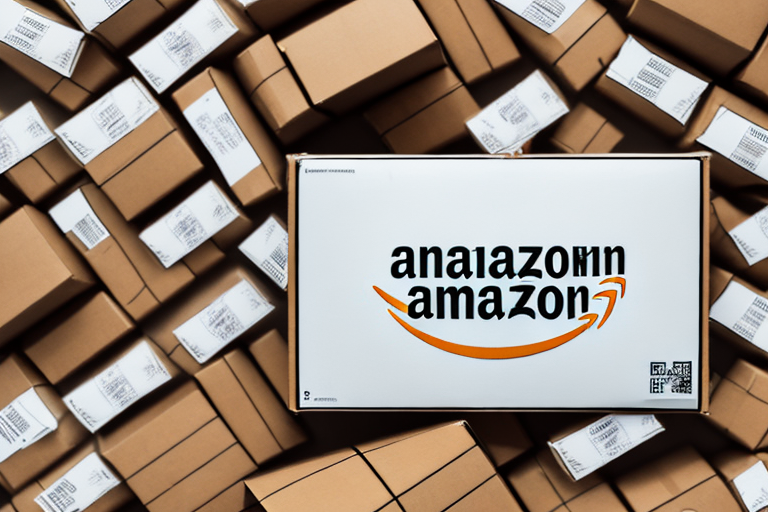Understanding Amazon Removal Order Fees
As an Amazon seller, comprehending all associated fees is crucial for maintaining profitability and operational efficiency. One such fee is the Amazon Removal Order Fee, which can significantly impact your bottom line if not managed properly. This article delves into everything you need to know about Removal Order Fees, including their purpose, calculation methods, and strategies to minimize associated costs.
What Are Amazon Removal Order Fees?
Amazon Removal Order Fees are charges imposed on sellers when they request the removal of inventory from Amazon's fulfillment centers. Reasons for initiating a removal order typically include:
- Inventory that is damaged or expired
- Unsellable or slow-moving products
- Product recalls or compliance issues
The fees cover the costs associated with handling, processing, and disposing of the goods. According to Amazon's official fee schedule, these charges vary based on the size and weight of the items being removed.
Being aware of these fees allows sellers to incorporate them into their overall cost structures and pricing strategies, ensuring better financial planning and decision-making.
Why Do Sellers Need to Pay Removal Order Fees?
While Removal Order Fees might appear as an additional expense, they serve several critical purposes that benefit both the seller and the customer:
- Maintaining Product Quality: Removing unsellable or low-quality inventory ensures that customers receive only the best products, enhancing customer satisfaction and trust.
- Preventing Storage Fee Accumulation: Excess inventory occupying Amazon's warehouses can lead to increased long-term storage fees, which can erode profit margins over time.
- Optimizing Warehouse Space: By clearing out unnecessary inventory, sellers free up space for high-demand products, facilitating better inventory management and potentially increasing sales.
Moreover, maintaining a clean storage environment helps in avoiding potential safety hazards or compliance issues that could damage a seller's reputation and lead to account suspensions.
How Are Removal Order Fees Calculated?
Amazon Removal Order Fees are determined based on several factors:
- Item Size: Larger items incur higher fees due to the increased handling and transportation costs.
- Item Weight: Heavier items cost more to remove as they require more effort and resources.
- Fulfillment Center Location: Removal fees can vary depending on the geographical location of the fulfillment center.
For instance, removing an oversized piece of furniture from a fulfillment center in California may result in higher fees compared to removing a small, lightweight toy from a center in Kansas. Sellers can utilize Amazon's Removal Order Fee Calculator to estimate the costs associated with specific removal tasks.
Additionally, sellers should be aware of other potential costs, such as disposal fees for non-sellable items and shipping fees if they opt to return inventory to their location. Carefully evaluating these costs can help sellers make informed decisions about whether to proceed with a removal order.
Triggers for Removal Orders
Several scenarios can trigger a Removal Order from Amazon, including:
- Inventory that is damaged, expired, or unsellable
- Product recalls due to safety or compliance issues
- Seller account suspensions or closures
- Excessive long-term storage fees accumulating over time
- Changes in product classifications or regulatory restrictions
Additionally, products found to violate safety standards, labeling requirements, or intellectual property rights can result in immediate removal orders. For example, if a product lacks proper labeling as required by the Federal Trade Commission (FTC), Amazon may mandate a removal to prevent consumer harm and regulatory non-compliance.
Strategies to Avoid Removal Orders
Preventing the need for removal orders not only saves costs but also ensures smoother operations on Amazon. Here are some effective strategies:
Regular Inventory Audits
Conduct periodic reviews of your inventory to identify and address slow-moving or unsellable items. Tools like Amazon Inventory Reports can assist in tracking inventory health and performance.
Maintain Product Quality
Ensure that all products meet Amazon's quality standards by:
- Using high-quality materials and accurate descriptions
- Implementing strict quality control measures
- Promptly addressing customer feedback and returns
Stay Updated with Policies
Avoid policy violations by staying informed about Amazon's FBA policies and any changes that may affect your listings.
Optimize Packaging and Labeling
Proper packaging and labeling not only reduce the likelihood of removal orders but also minimize additional fees related to damages and handling. Follow Amazon’s packaging requirements to ensure compliance.
Consequences of Failing to Pay Removal Order Fees
Ignoring or failing to pay Removal Order Fees can lead to several adverse consequences for sellers:
- Increased Penalties: Accumulating unpaid fees can result in higher charges over time.
- Account Suspensions: Persistent non-payment may lead to temporary or permanent suspension of your Amazon seller account.
- Legal Action: In extreme cases, Amazon may pursue legal remedies to recover unpaid fees.
Moreover, unpaid fees can result in your inventory being held by Amazon, delaying order fulfillment and negatively impacting customer satisfaction and your seller rating.
Common Mistakes Leading to Removal Orders
Being aware of common pitfalls can help you avoid unnecessary removal orders:
- Neglecting Inventory Management: Failing to monitor and manage inventory levels can lead to overstocking and increased long-term storage fees.
- Poor Product Quality Control: Letting subpar products reach Amazon’s fulfillment centers increases the likelihood of returns and removal orders.
- Ignoring Customer Feedback: Not addressing negative feedback can result in poor product performance and potential compliance issues.
- Inadequate Labeling: Incorrect or incomplete labeling can violate Amazon’s requirements and trigger removal orders.
Impact of Removal Orders on Seller Metrics and Account Health
Removal Orders can adversely affect your seller metrics and overall account health:
- Increased Fees: Accumulating removal fees reduce your profit margins.
- Operational Disruptions: Holding inventory due to unpaid fees can disrupt order fulfillment and lead to stockouts.
- Negative Seller Ratings: Delays and issues arising from removal orders can result in poor customer reviews and decreased seller ratings.
- Account Health: Multiple removal orders and associated fees can signal poor inventory management, potentially leading to account suspensions.
Maintaining a healthy account involves proactive inventory management, adherence to Amazon’s policies, and prompt resolution of any issues that could lead to removal orders.
Tips for Managing Removal Orders and Minimizing Costs
Effective management of Removal Orders can help mitigate costs and maintain account health:
- Utilize Amazon’s Removal Tools: Leverage tools like Removal Reports to monitor and manage your removal requests efficiently.
- Consider Third-Party Services: Explore third-party removal and fulfillment services that may offer cost-effective alternatives to Amazon’s in-house solutions.
- Optimize Packaging: Reducing the size and weight of your products can lower removal fees.
- Plan Inventory Levels: Align your inventory with demand forecasts to prevent overstocking and minimize the need for removal orders.
- Track Removal Costs: Implement a system to track and analyze removal fees, helping you identify trends and areas for cost reduction.
Disputing a Removal Order and Obtaining a Refund
If you believe a Removal Order Fee has been incorrectly charged, you can dispute the charge through Amazon's Seller Central platform. To successfully dispute a fee:
- Gather Evidence: Collect all relevant documentation, such as order details, shipment receipts, and communication records.
- Submit a Dispute: Use the appropriate form in Seller Central to submit your dispute, providing a clear explanation and supporting evidence.
- Follow Up: Monitor the status of your dispute and be prepared to provide additional information if requested by Amazon’s support team.
Successful disputes can result in fee reversals, helping to maintain your financial health as a seller.
Alternatives to Amazon Removal Services
While Amazon offers convenient removal services, exploring alternatives can sometimes lead to cost savings:
- Third-Party Removal Companies: These companies may offer lower rates and specialized services tailored to your needs.
- Self-Removal: If feasible, removing inventory yourself can eliminate removal fees entirely, though it requires additional resources and logistics management.
- Donation or Recycling: Partnering with charitable organizations or recycling centers can be a cost-effective way to dispose of unsellable inventory.
Before opting for an alternative, ensure that the method complies with Amazon’s policies and maintains your product’s integrity.
Best Practices for Product Removal and Disposal
Properly removing and disposing of inventory is essential for compliance and sustainability:
- Adhere to Regulations: Follow all local, state, and federal regulations regarding the disposal of goods, especially for hazardous or regulated products.
- Partner with Trusted Vendors: Work with reputable vendors or disposal services to ensure responsible handling of your inventory.
- Implement Sustainable Practices: Consider eco-friendly disposal methods, such as recycling or donating unsellable items, to promote sustainability and potentially gain goodwill from customers.
Implementing these practices not only helps in maintaining compliance but also enhances your brand’s reputation for responsibility and care.
Frequently Asked Questions About Amazon Removal Order Fees
When Are Removal Order Fees Charged?
Removal Order Fees are charged when a seller requests the removal of inventory from Amazon's fulfillment centers. This can occur due to various reasons, such as unsellable inventory, product recalls, or changes in stock levels.
Can I See an Estimate of Removal Order Fees Before I Request a Removal?
Yes, Amazon provides a Removal Order Fee Calculator that allows sellers to estimate the costs associated with specific removal tasks based on item size, weight, and fulfillment center location.
What Happens to Removed Inventory?
Depending on the reason for removal, inventory can be:
- Disposed of through Amazon’s disposal services
- Returned to the seller’s address
- Donated to approved charitable organizations
Sellers can specify the desired action when initiating a removal order, ensuring that the inventory is handled according to their preferences and compliance requirements.
Conclusion: The Importance of Understanding and Managing Amazon Removal Order Fees
Amazon Removal Order Fees are a critical component of the seller experience on the platform. While they represent an additional cost, understanding their purpose, calculation, and impact is essential for effective financial planning and inventory management. By implementing best practices, regularly reviewing inventory, and staying informed about Amazon’s policies, sellers can minimize removal-related expenses and maintain a healthy, profitable presence on Amazon.
Proactive management of removal orders not only safeguards your financial interests but also enhances customer satisfaction and contributes to the long-term success of your Amazon business.






















